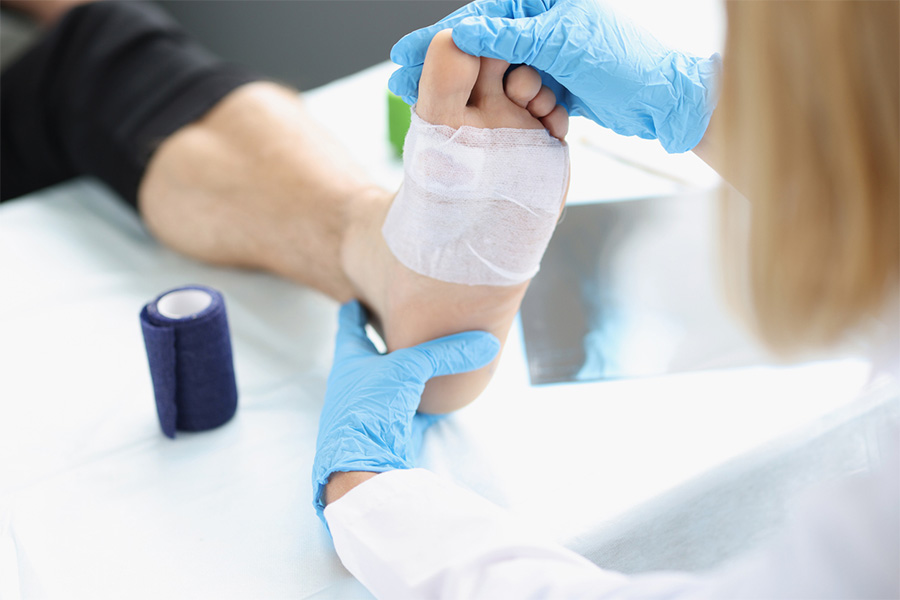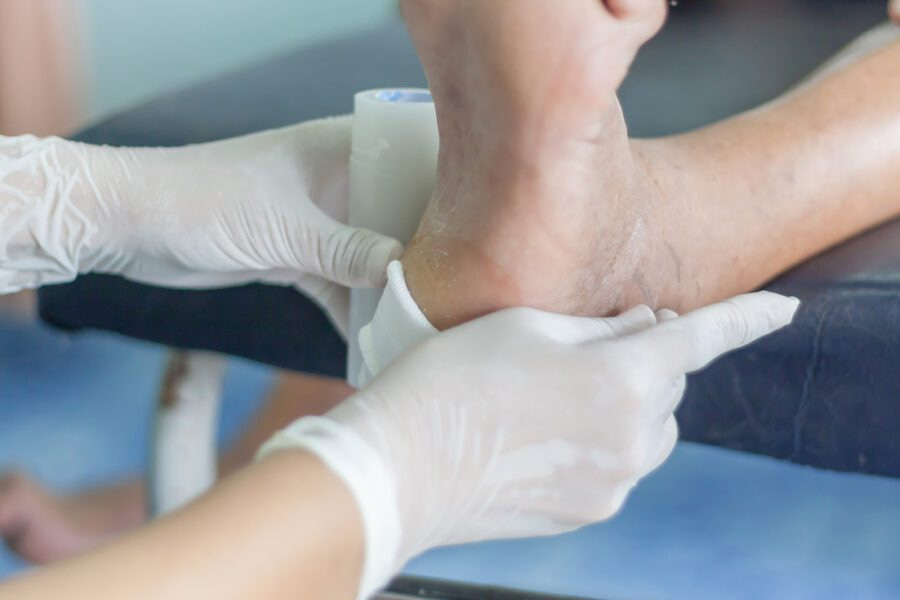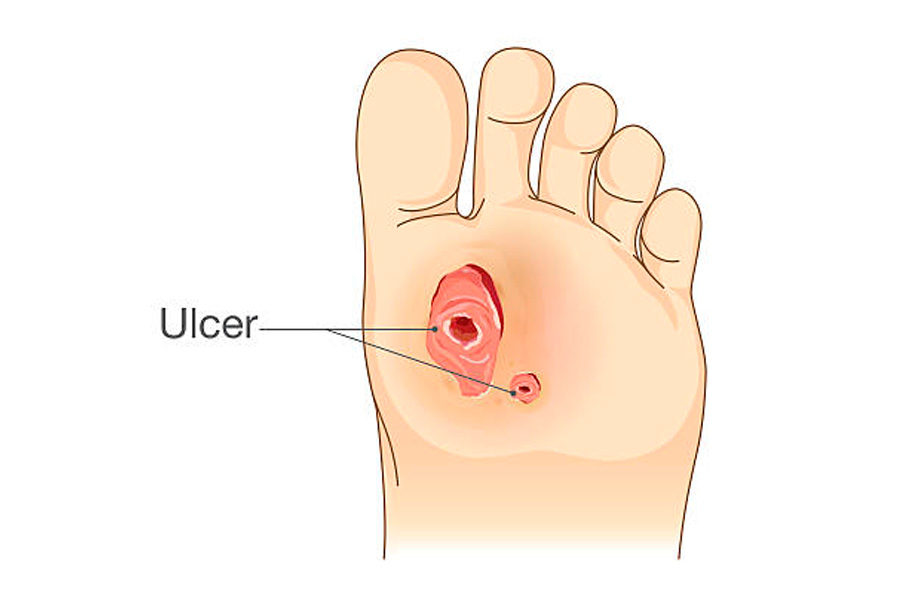Wound healing is complicated by high blood glucose levels and its effect on blood flow. Healthy circulation is necessary for a wound to heal, and since diabetics have poor circulation, it usually takes more time for the healing process to commence.
For diabetics, slow-healing wounds are usually in the lower extremities, which are also most affected by poor circulation. The longer it takes for a wound to heal, the greater the likelihood that complications will develop. Because of wound healing delays, diabetics are at risk for infection and serious complications such as lower extremity amputation.
With all things considered, diabetics should be educated on the importance of proper wound care and the need to see a doctor for medical attention if they notice a wound anywhere on the body – particularly the feet.
Diabetic Wounds Are Complex
Diabetic wounds are not like regular wounds. Even a tiny scrape has serious implications due to the nature of the disease. Therefore, they require special attention from a doctor who will apply proper wound care and try to preserve healthy tissue as much as possible. If proper wound care is not administered, the wound could develop an infection, which could spread to the bone or bloodstream, and could lead to amputation.
Without proper care, diabetic wounds do not go away and only become increasingly worse, threatening your health and safety.
Diabetic Wound Treatment Protocols Are Different
Slow-healing wounds can easily become infected, as diabetes weakens the immune system. Additionally, bacteria entering the wound can slow wound healing even more. With infection, a diabetic’s healing mechanisms do not have a chance to fight it off – that’s why proper wound care for diabetics is different.
Treatment protocols for diabetic wounds change due to the seriousness of the risks. In most cases, more personalized treatment is recommended by doctors. Wound assessment, tissue debridement or the removal of infected tissue, infection control through antibiotic treatment, moisture balance for proper wound healing, and pressure relief to redistribute pressure from the wound are some key methods of diabetic wound healing. Proper wound care aims to avoid complications that are very real risks to anyone with diabetes.
If you have been diagnosed with diabetes and have an open wound, let your healthcare provider know as soon as possible. In the meantime, wash the wound with soap and water, dry it well afterward, and apply antibiotic ointment. Do not touch the wound and avoid applying pressure on it.
Diabetic Foot Care in Cincinnati, OH
Proper diabetic wound care may not have a direct impact on the disease itself, but it helps minimize serious complications. Foot conditions such as corns, calluses, and ingrown toenails that you may think are minor could become serious if you have diabetes.
Our board-certified podiatrists at Cincinnati Foot & Ankle Care are well-trained and highly experienced in diabetic foot care. We regularly perform proper wound care for our patients with diabetes. We can provide you with what you need to help your wound heal fast, and without complications. To schedule an appointment with any one of our podiatrists, call our podiatry clinic nearest you or use our convenient appointment request form.
Share

People with diabetes often experience difficulty healing wounds.




